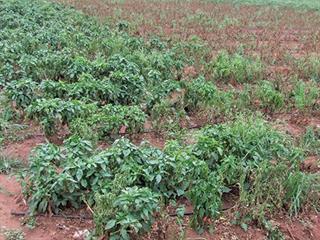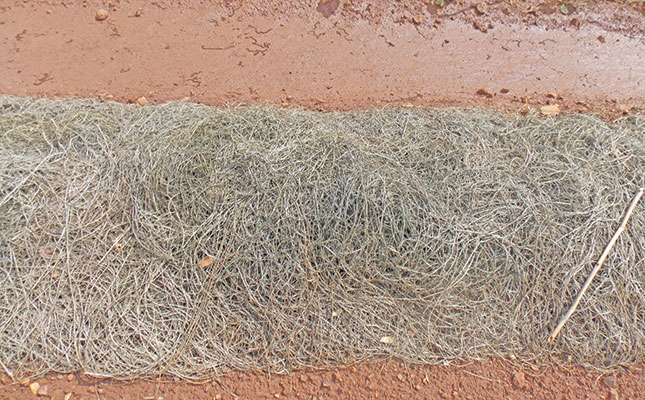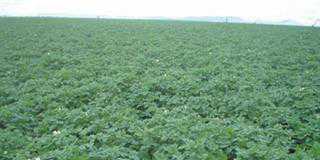
No single variety is resistant to every one of these. A relatively new, and highly destructive, disease in South Africa is Phytophthora capsici. Recorded in the early 1920s, it has spread around the globe, causing mass destruction of capsicum in some cases. It is also a major disease of cucurbits and can affect tomatoes and brinjals. What’s more, many weeds host this disease.
P. capsici is a fungal disease that produces zoospores. These have flagellae that enable them to swim to a host plant.
A1 and A2 mating strains also occur. If they cross, they produce oospores, hardy spores that can remain in the soil for years, resisting drying and cold. Although the disease can infect the leaves and fruit, this usually occurs in wet climates. The first symptom is normally a wilting of the plant.
When the plant is removed from the soil, a blackening around the collar will be seen. Under favourable conditions, the disease spreads rapidly from there in all directions. If neither the A1 nor A2 strain is present, the fungus will not be able to produce oospores. This is the case in South America. South Africa, unfortunately, has both strains. P. capsici is most active at about 30°C. It starts off in wet patches on the land and spreads from there. Once the disease takes hold, the zoospores increase rapidly and are spread mechanically, and by wind and water. If wet, warm conditions prevail, the whole land may be destroyed.
Because the disease has many variants, the breeding of resistant capsicum varieties is a challenge. Varieties that show a high degree of resistance in other countries do not do so in South Africa, but some tolerance is often seen in the late onset of symptoms. Although this is not an anaerobic organism, it tends to favour semi-anaerobic conditions and saturation. For this reason, it is widely recommended that planting be done on raised beds in soil with a good structure. However, in certain circumstances, following this procedure may still be insufficient to keep P. capsici at bay.
Wet low-lying areas
I’ve often seen that the disease starting in low-lying areas in the land where there is temporary soil inundation after heavy rain. If the rain continues for several days, the whole land quickly succumbs. The persistent rain provides semi-anaerobic, saturated conditions even in well-drained soil.
Treatment – a challenge
Chemical treatment has limited value, but some biological products do seem to help. Certain organisms that colonise the rhizosphere (the area around the root zone) have shown some benefit. If researchers could isolate these, they might be able to develop a suitable commercial product for treating P. capsici. In any case, a biological product such as this would require the correct soil conditions. It is pointless adding organisms to a hostile environment.
I plant capsicums annually and have never had a plant succumb, even in times of heavy, persistent rain, despite the fact that commercial growers in the area have been virtually wiped out. I practise no-till and have a healthy organic content and plenty of earthworms. Rotation also helps, provided that a susceptible crop or weed has not grown on the land for several years. Rotation tends to delay the onset of the disease but does not prevent it entirely. If you can, plant in well-drained soils with no dips that can accumulate water after a heavy downpour.













